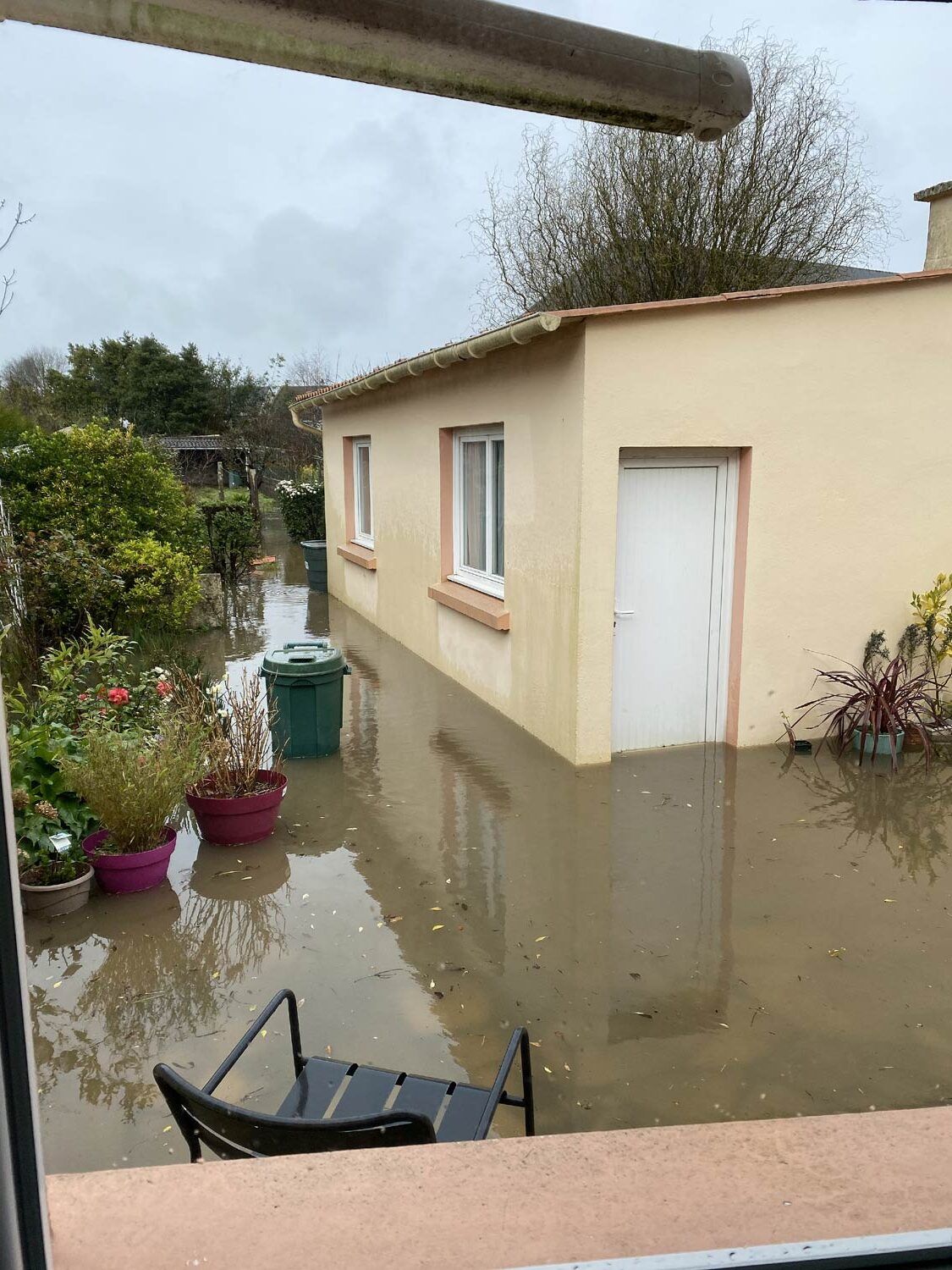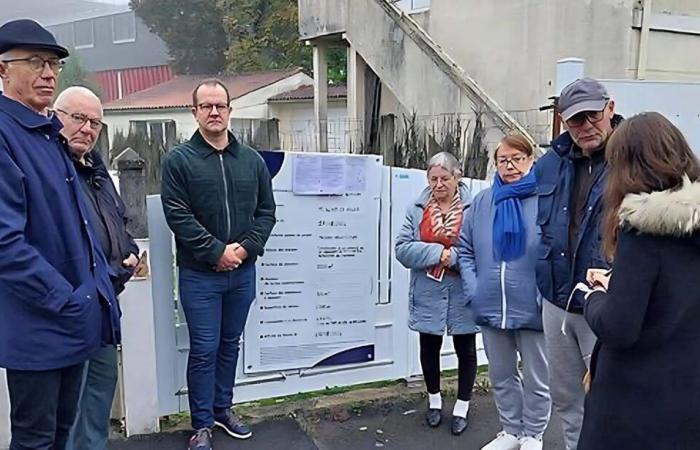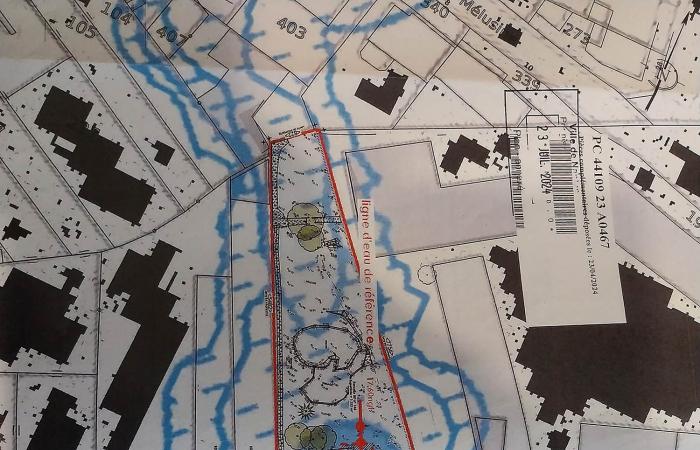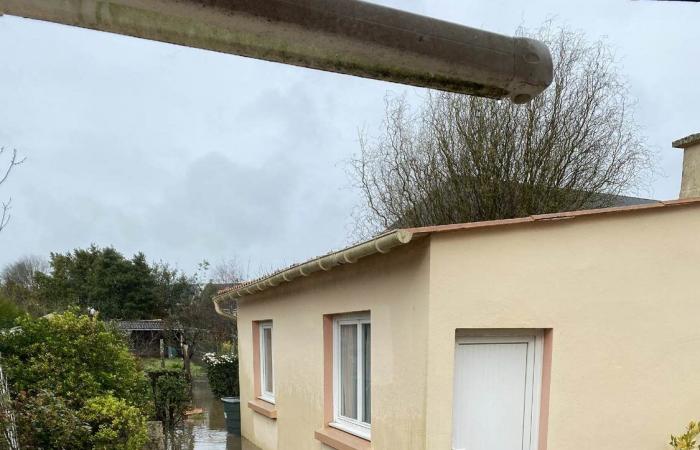Tribune. While the deadly floods in Spain should remind us of the dangers linked to construction in flood-prone areas, the city of Nantes is promoting a real estate project located in the bed of an ancient stream. This project worries residents of the Bottière district, already subject to flooding. Mr Mondialisation relays their press release to publicize their struggle.
Tribune: This construction site is a non-compliance with the PLUm (Local Urban Planning Plan) and the city of Nantes is turning a blind eye!
“The city of Nantes turns a blind eye to construction in a flood zone of an old stream bed” – Collectif Bottière Petit Bel-air
Following a meeting with the town planning department of Nantes town hall concerning the controversial building permit in the flood zone of rue de la Bottière, a former stream bed, the collective deplores the response provided by the authorities. Rather than recognizing the risks that this real estate project poses for our neighborhood and the endangerment of residents, the town planning department invites us to “negotiate with the promoter”.
As a collective of local residents concerned by recurring floods and the environmental and landscape impact of this constructionwe cannot accept this answer as a viable solution. We had hopes, just like the elected officials who support us Mr. CITEAU, Mrs. VITOUX, and Mrs. BONAMY, on responsible decision-making that respects the Local Urban Plan (PLUM), safety standards (physical risk on hazards). means of flooding), the green and blue grid, respect for the separation distances of a comb construction… and the preservation of the quality of life of the inhabitants.
This project does not meet these essential requirements of the PLUm and the UMc zone and its ambition for water infiltration…
A town hall that encourages people not to respect the PLUm
The planned building corresponds precisely to the definition of a comb construction, requiring respect for separating limits of 6 meters (page 72 of the PLUm) and low constructions on the property line. The promoter nevertheless submitted it as “construction on street” to deviate from these rules. These rules were recalled by a judgment of the Nantes administrative court of March 12, 2024 for a building in Jonelière.
The town hall is fully aware of this non-compliance with the ruleswhich we were able to submit during our meeting. However, she has validated the building permitsupports the project and seems not to plan to withdraw the permit, forcing us to have to initiate complex legal procedures to enforce its PLUm. However, this is part of his role!
In addition, the negotiations suggested by the town hall with the developer seem include proposals that are just as illegal with respect to the PLUmsuch as an elevation of the R+3+C construction.
An amnesiac town hall which forgets its own vision of respecting the “volumes of neighboring buildings”
The town hall has already refused a building permit on this plotand had notably motivated its refusal to the Administrative Court by the size of the construction on the street which did not respect “the volume of neighboring buildings” (decision of August 26, 2022).
It was then a construction in R+1+C, compared to R+2+C+1m for the construction of the new building. Who should we believe? The town hall of 2022 or that of 2024? However, the municipal majority seems to be the same between these two dates!
– For free information! –Support Mr Japanization on Tipeee
Underground car parks liable to flooding: the ecological absurdity of a narrow reading of town planning rules
The soil study found that the water table was less than 3 meters from the natural terrain (which we also doubt, regularly seeing it rise above the ground by submersion of the natural ground!). However, reaching the water table by construction is prohibited in France and its pumping for construction purposes is also prohibited. However, the foundations reach the water table. To date, the water table is subject to overflow since its overflow creates flooding in the sector.
The results of the piezometric probe on the fluctuation of the water table height on the average hazard have not been transmitted. Parking lots are planned, as rightly imposed by the PLUm. To optimize the living space and in contrast to all the buildings built in recent years on the block, these new parking lots would be underground.
In addition to potentially constituting an obstacle to the underground flow of the old arm of the Robert Ford and disrupt the hydrological balance of the watershed, they risk experiencing the same success as the underground car parks at 2 and 4 rue de la Bottière (Nantes Métropole Habitat buildings): regularly flooded by rising water tables, they are deserted by residents who cannot afford to see their vehicles flooded!

However, the regulation requires leaving the natural flow axes free of obstacles and endangering people. The planned construction does not guarantee that the risk to people and property will not increase. The construction should, however, be oriented so that it does not intercept groundwater runoff (page 52 -54 of the PLUm).
Furthermore, a soil study shows that in the middle of the average hazard it isan area of major water penetration since the soil study demonstrates a soil “silt, sandy, silty clay, clayey loam without resistance”, which it is therefore essential to protect.
Obligation to construct car parks, optimization of living space, authorization of flood-prone car parks: the town hall is therefore preparing to validate the construction of these car parks which would have significant consequences for the entire district and which could remain shunned by future inhabitants! Welcome to absurdity!
The myth of the backhoe loader that knew how to dig between the roots of classified trees
The planned underground car park extends to the property line with the Léonard de Vinci high school. On this property line stand 9 magnificent lime trees several tens of meters high, classified by the town hall. For trees classified under the PLUm, the soil study defines thatit would be necessary to respect 1.5 times their height to carry out earthworks and respect their root systemwhich also contributes to the district's water regulation through their withdrawal estimated at 400 liters per day per tree, or 3.6 cubic meters.
Questioned on this point, the town hall trusts the sagacity of the backhoe loader to respect the root system!
Next steps
“this project is planned in an area classified as a “medium” flood hazard”
Neighborhood residents are determined to continue their actions to prevent the implementation of a project that goes against the principles of security and preservation of the urban environment. We are all the more worried that This project is planned in an area classified as a “medium” flood hazard.an area which is already experiencing recurring floods, as shown by the recent episode of October 9, 2024.
We wish to alert the media and public opinion about the refusal of municipal services to take our objections into account. The current situation pushes us to consider additional actions to obtain the cancellation of this project.
We will continue to inform the press and the population Nantes of the stages of our fight to protect our neighborhood.
Collectif Bottière Petit Bel-air
Header image: Collective Facebook page










